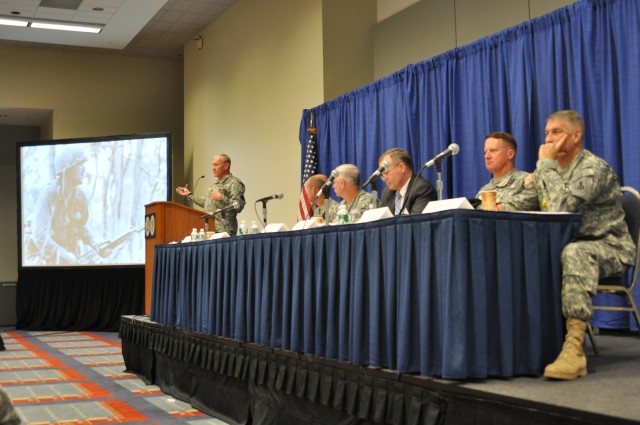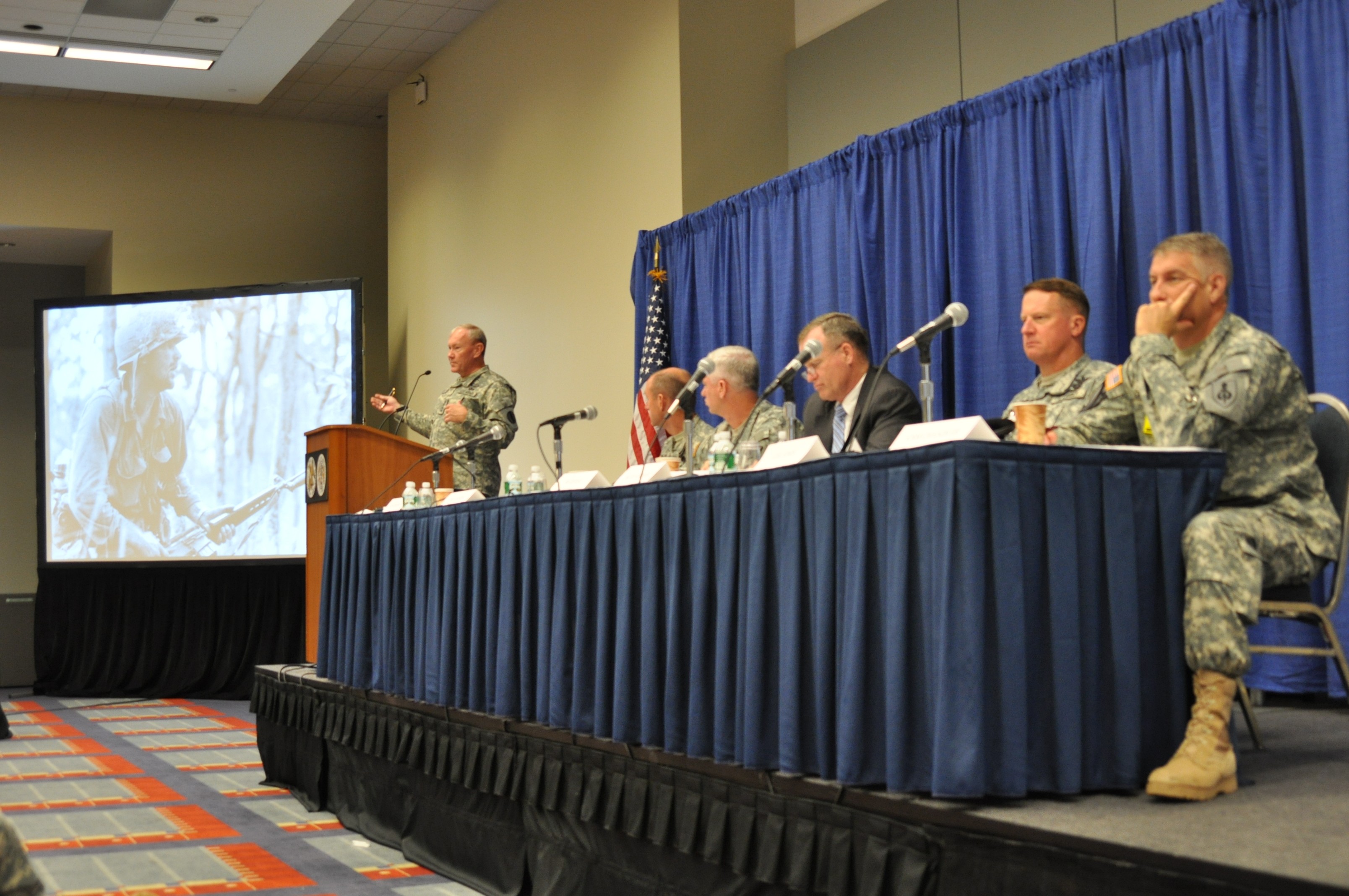WASHINGTON (Oct. 6, 2009) - Several Army leaders discussed the requirements and conditions to create the best leaders for tomorrow on a panel at the Association of the United States Army annual meeting in Washington, D.C. today.
Dempsey was joined by: Brig. Gen. Ed Cardon, deputy commandant of the Command and General Staff College; Maj. Gen. Sean Byrne, commander of the Human Resources Command; Volney Jim Warner, commandant of the Army Civilian University; Col. Mark Jones, dean of the Warrant Officer School; and Command Sgt. Maj. Ray Chandler, commandant of the U.S. Army Sergeants Major Academy.
The conditions to developing officers, noncommissioned officers, warrant officers and civilians lie in the four trends Dempsey described in his keynote address to the AUSA chapter presidents on Sunday: certainty of uncertainty, an increased pace of change, competitiveness, and decentralization.
Cardon commented on the final draft Army Leader Development Strategy, a plan that describes how the Army will educate, train and provide experiences to progressively develop leaders. ALDS seeks to develop leaders within a flexible, relevant and enduring framework that balances training, education and experience. It also emphasizes leader development as a career-long process.
Byrne looked at leader development from a manpower perspective. He cited personnel, time and retention as key issues facing the Human Resources Command.
"Right now, your Army is short about 2,000 captains and 2,000 majors. We're filling in gaps where we can," he said.
Byrne continued to discuss the role of uncertainty in planning. "A year ago, no one has heard of transition teams and now they're one of the number one needs right now. We're all looking very closely at what type of requirements are needed for Afghanistan," he said.
Warner's emphasized the need for civilian education as they take on more responsibilities in the war fight. "About 5,000 civilians are currently deployed to Afghanistan and Iraq. If you're in the generating force, almost 75 percent of the positions are filled by civilians," he said.
"It's a particular challenge because of the history and the level of transformational change. The way we used to think about the generating force is that it was relatively stable and worked on very long timelines in support of the operational army," Warner added.
Warrant officers education is also facing changes, according to Jones. "The warrant officer community is a victim of its own success," he said. "They pride themselves as the quiet professional, but that also means that they don't get the attention others do. Nothing less than a whole cultural shift is necessary to get more for warrant officers."
As a result, warrant officer course is now four weeks long, instead of two. The extra weeks will teach warrant officers about international relations, media relations along with other topics.
Chandler provided a status update on NCO education, namely revising the classes to focus more on the reason for certain duties and jobs. "We have to look at the echelon at which they're learning. For Warrior Leaders Course, are we going to teach them national security decision making processes' No, but what we are going to teach them is why they're doing what they're doing," he said.
A key conduit for leader development is distance learning technology. Originally introduced as a means to save money, Soldiers, especially NCOs, are taking classes remotely at record numbers. In some cases, classes are only available through the internet.
"We have NCOs right now taking classes from Afghanistan and Iraq," said Cardon. "Because of distance learning, NCOs already have a culture of lifelong learning."
However, a concern with distance learning is time. As flexible as it is, Soldiers are still facing difficulties completing courses in time, before they have to attend a traditional class.
"The chief talks about the era of persistent conflict, and I believe what he says and I see us as a deploying force for some time," said Gen. Martin Dempsey, commander of the U.S. Army Training and Doctrine Command. "And if you're going to be a deploying force for some time, then you have to advance your processes and education."
Related Links:
Dempsey delivers command update, talks future during AUSA dinner




Social Sharing